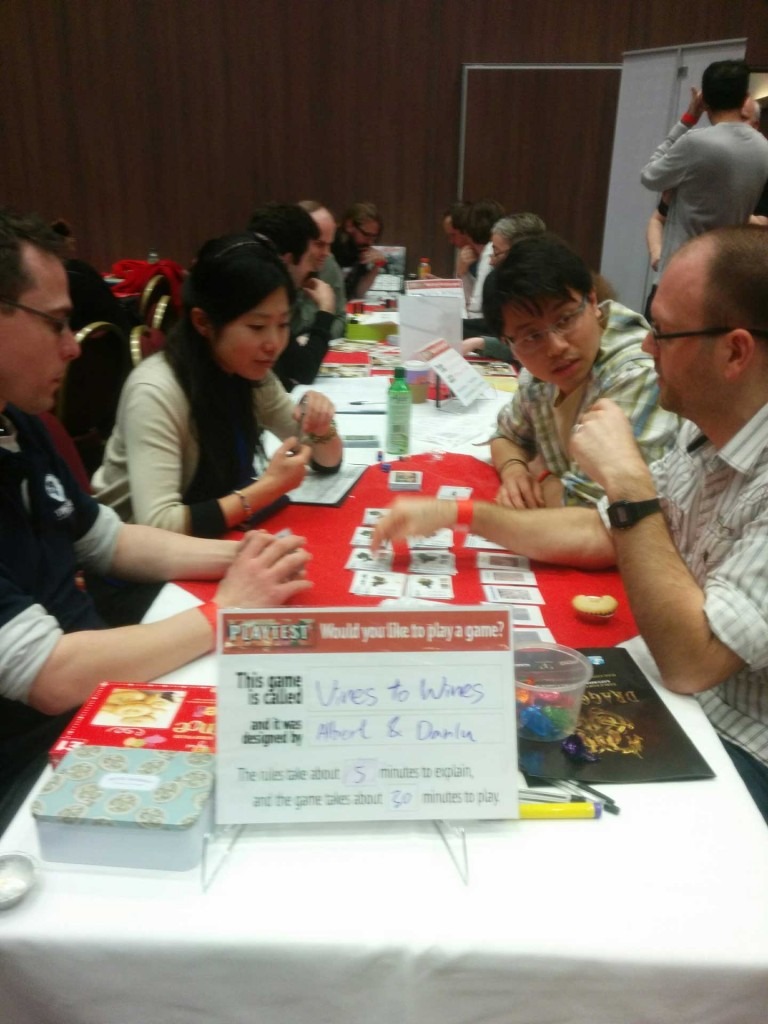One of the important and oft discussed areas of responsibility for a strategist working in creative agencies is the ‘Creative Briefing’.
In case you’re not familiar, the creative agency has been briefed by the clients (advertisers / brand owners) on what’s needed for this particular project, and then someone (typically a strategist) develops a creative brief that synthesizes what the project is, what needs to be done or communicated and to whom.
Generally, that’s a written (and templated) document. The briefing itself might be complemented with a slideshow presented during an internal meeting with representatives from all departments. By the end of the creative briefing, the project is handed over to the creative department.
In a Psychology Today post defining characteristics of play (and similar to French Sociologist Roger Caillois’ in his book Man, Play, and Games), Pr. Peter Gray from Boston College details five different ones:
- Play is self-chosen and self-directed; players are always free to quit.
- Play is activity in which means are more valued than ends.
- Play is guided by mental rules.
- Play is non-literal, imaginative, marked off in some way from reality.
- Play involves an active, alert, but non-stressed frame of mind.
The author also writes about how play and a playful state of mind can be thought as a spectrum, particularly for adults. I’ll use a similar example as the author. When I started writing this post a few days ago, it was 100% play, then it started dropping as I realized I wasn’t clear on what my point was, or where I was going. I’d say I stopped writing at 60% play or so. I tried hand writing some notes yesterday, perhaps 80% play.
Of course it’s a subjective measure, it’s just to give you a sense of the presence of play being fluid and changing.
This is interesting for a creative briefing because a playful state of mind fosters creativity:
The alert but unstressed condition of the playful mind is precisely the condition that has been shown repeatedly, in many psychological experiments, to be ideal for creativity and the learning of new skills.
Pr. Peter Gray, The Value of Play
Thoughts and feelings of obligation, coercion, force, or pressure in the creative briefing are likely to reduce or eliminate the presence of play, and thus stifle the kind of creativity available with a playful state of mind.
In light of the defining characteristics of play above, here are suggestions to increase the presence of play for a creative briefing.
1. Assume Play Starts With You
Play is self-chosen and self-directed. If you’re not playing – and you’re leading this creative briefing – you’re more likely to suck play out of others in the meeting than encourage or infuse any.
A few early warning signals:
- You’ve done this many times and it’s the same thing over again – and you think the rest of the team feels the same.
- You’re doing because you have to, it’s your job.
- You’re just trying to get through it and get it over with.
- You know the team won’t read your brief and you’re resentful.
- You’re not satisfied with your brief.
- You’re stressed out, tired, running out of time.
None of those above are wrong, it’s pretty normal to think or feel these at different points. They’re just warning signals of the potential absence of play. The show goes on and play isn’t even required to get the job done. I do believe it’s a missed opportunity for creativity though.
2. (Ready) Set Play Reminders
All mammals, including us Homo Sapiens, naturally and instinctively play to learn from a young age. For us though, and perhaps even more so since we set ‘play’ in opposition to ‘work’ (a whole other topic for another time), a playful state of mind can easily dissipate or be forgotten in the face of other seemingly more pressing concerns such as the ones cited above.
No time to play, we’re working to wrangle creativity in service of these brands’ bottom lines.
While yes, you’re at work and you technically have an obligation to deliver this creative briefing, play isn’t mutually exclusive.
Have some reminders to remember when you forget. Those can be many things, pick what works for you: a post-it note by your desk, a reminder on your calendar, a note in the creative briefing document, a meaningful physical token (a die, playing card pinned by your desk, a miniature, a figurine, a toy – could be anything), etc.
Place it somewhere you’ll come across it, and replace it if or when it loses meaning – if it has faded in the background and you’re ignoring it, for example.
Remind yourself what you enjoy about this job and industry. I grew up (in France) with iconic ads that bring back memories and make me laugh to this day, like this weird Kiss Cool mints ad campaign.
Remind yourself why you’re doing this in the first place. It might sound lofty but I believe mass communication can be used to have a positive impact on people and in the world. I want to work on creative communications projects that have that kind of impact, from a silly ad making people smile to sell mints, all the way to actually making a useful difference.
3. Play With The Delivery
It’s been said before and I’ll say it again: let’s be honest, the written creative brief document is almost always a boring piece of paper (or file).
Do you read the manual before using that new thing you got? Do you read the T&C’s before going ahead using that new digital service?
I don’t, or not most times. If I actually stop a second to think about it, it’s ironic that I’ve had resentful thoughts about colleagues thinking they didn’t read my templated written creative brief.
The written brief is for you and it’s arguably an important checkpoint to have in the background for everyone on the team. That doesn’t mean everyone needs to read it.
For the creative briefing, what of the contents of the written brief are the most important to convey to the whole team, and how can you do this in a way that brings play?
That’s plenty to play with, even with little time.
Here are a few ideas to help the means be more valued than the end, imagination, and marking the creative briefing off from the rest of reality (characteristics of play #3 and #4):
- Play music or video. I once had the intro music of the movie “From Dusk Till Dawn” playing as people walked in the room, then played a clip from the movie. It barely had any relation to the project at hand, but there was something about the name that did, and it was funny.
- Play with unexpected references. I once had a slide featuring two Disney characters (A princess and a villain) in the middle of an otherwise fairly ‘serious’ or common briefing to illustrate a consumer tension. People smiled and got the idea I wanted to convey straight away.
- Play with visual analogies. I once talked about the business challenge, insight, and key message to communicate over images comparing different aspects of every day life (football, mobile phones) that had little to do with the project at hand, though made total sense for the briefing.
- Play with props. Sometimes a physical prop can convey more than words or an image. Once, the brief I was giving was about happiness, and the brand’s main color was yellow. I brought a couple of yellow smiley face stress balls I had laying around, people played with them during the briefing and loved it.
4. Invite Others To Play Along
Even though one person might technically be in charge of the delivery, creative briefing is a collaborative team effort. Involve team members in the preparation. If I use music for example, I’ll have told the account managers and creative director beforehand and to have their agreement and hopefully get them excited about it too.
While you might never utter the actual word ‘play’ in any of this process, you want to be mindful of its presence. Ask people if they’re ready for the briefing. Small physical things can change or set the mood (even if sometimes gimmicky): ask everyone to clap twice, do a round of high fives, or have everyone stand up and shake or stretch before you begin, for example.
Invite people to contribute. Make space in the briefing for people to stop you. Ask people if they have examples, or if they’re reminded of anything. Be mindful of getting annoyed if anyone interrupts you. If they’re stopping you because they had an idea related to the topic at hand, great! it’s probably going in the right direction. Sometimes we want to keep questions and comments for the end because of time available. Sometimes that’s appropriate, and other times not. Play it by ear.
Look around the room. Do people seem disengaged and checked out? Probably not much play, or even life going around. Stop whatever it is you’re doing or saying, and address whatever is going on. It doesn’t have to be dramatic, It’s not personal. Maybe just ask what’s going on and listen.
Remember to smile.
If people leave the room looking forward to tackling the project you all just talked about, there’s a good chance they’re in a playful state of mind. Creativity will naturally follow.



